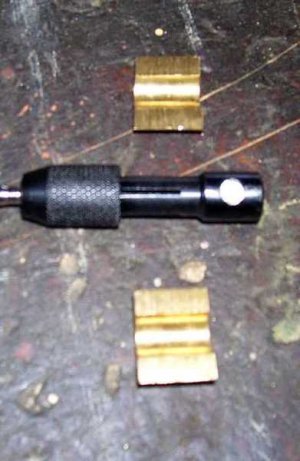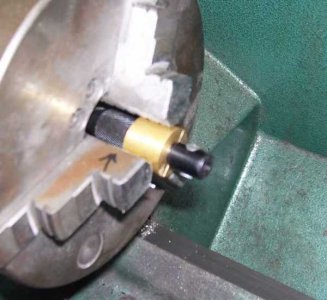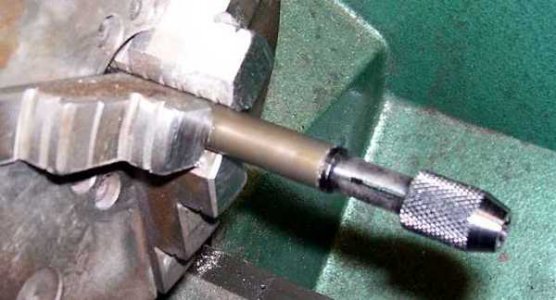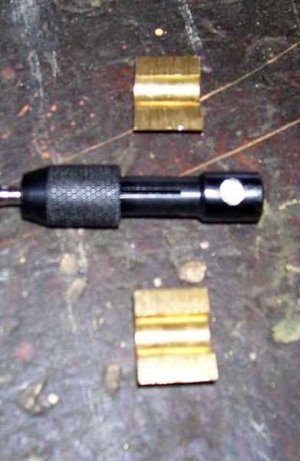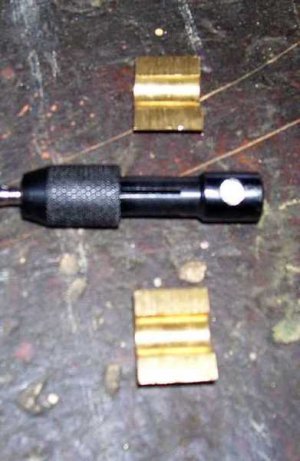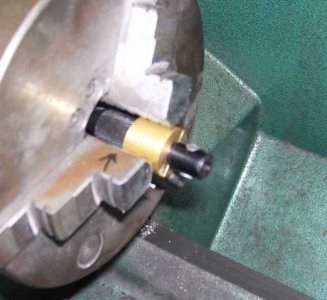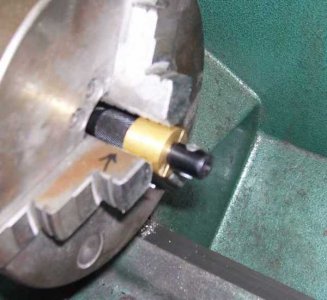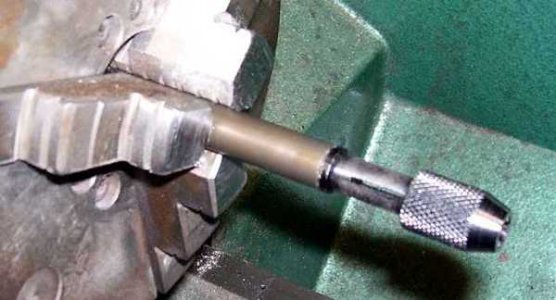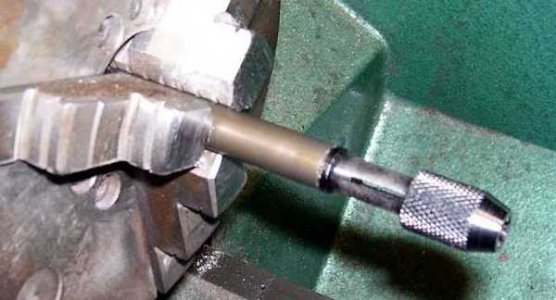I had a discussion with a friend who is much more mechanically inclined than I am; he's lived with and used his lathe and mill for many years. He makes and sells custom hardware for some optical stuff.
He was whining about how long it takes him to change taps on a widget he makes. He taps in a small semi-disposable drill press bought used for the purpose and set up for tapping by releasing the return spring and belt, then inserting a handle on the spindle shaft. He has to tap three or four different sizes per widget, so tap changes are a pain. He's tried using the taps directly in the chuck jaws, but apparently something about the hardened and polished tap will not give enough purchase on the chuck jaws to prevent the tap from spinning in the chuck reliably. Besides, you have to use a key on the chuck. That's not quick change.
After some discussion, we came to:
You can make a quick-change setup for taps by not trying to quick-change the taps. Tap wrench/handles are quite cheap these days. He sells a DIY kit which has one in it that costs him under $3 each. At that price, you can consider a tap handle to be part of the tap.
Once you make that decision, you can keep a tap handle per tap size, and modify it to be quick-change in the chuck. This could take the form of
- using a lathe, rotary table, or index block to file/grind the head of the handle to either hex or semi-trianglular to make it a quick fit in the chuck, with only hand tighening needed
- as above, but file/grind to a standard hex head size; then put a socket into the chuck and a neodymium magnet in it (or on the tap handle) to hold it in the socket; this is true quick change
- most tap handles have a central hole in the top of the handle, perhaps for guiding. Get an appropriate cheese-steel bolt with a maybe 7/16" head, chuck up the head in the lathe and turn the bolt body down to a press fit for the hole in the lathe head. Epoxied magnet/etc. makes this a true quick change in a socket held in the drill chuck.
- We thought about turning down hex stock, but cheese-steel bolts are cheaper and more available.
He was whining about how long it takes him to change taps on a widget he makes. He taps in a small semi-disposable drill press bought used for the purpose and set up for tapping by releasing the return spring and belt, then inserting a handle on the spindle shaft. He has to tap three or four different sizes per widget, so tap changes are a pain. He's tried using the taps directly in the chuck jaws, but apparently something about the hardened and polished tap will not give enough purchase on the chuck jaws to prevent the tap from spinning in the chuck reliably. Besides, you have to use a key on the chuck. That's not quick change.
After some discussion, we came to:
You can make a quick-change setup for taps by not trying to quick-change the taps. Tap wrench/handles are quite cheap these days. He sells a DIY kit which has one in it that costs him under $3 each. At that price, you can consider a tap handle to be part of the tap.
Once you make that decision, you can keep a tap handle per tap size, and modify it to be quick-change in the chuck. This could take the form of
- using a lathe, rotary table, or index block to file/grind the head of the handle to either hex or semi-trianglular to make it a quick fit in the chuck, with only hand tighening needed
- as above, but file/grind to a standard hex head size; then put a socket into the chuck and a neodymium magnet in it (or on the tap handle) to hold it in the socket; this is true quick change
- most tap handles have a central hole in the top of the handle, perhaps for guiding. Get an appropriate cheese-steel bolt with a maybe 7/16" head, chuck up the head in the lathe and turn the bolt body down to a press fit for the hole in the lathe head. Epoxied magnet/etc. makes this a true quick change in a socket held in the drill chuck.
- We thought about turning down hex stock, but cheese-steel bolts are cheaper and more available.



